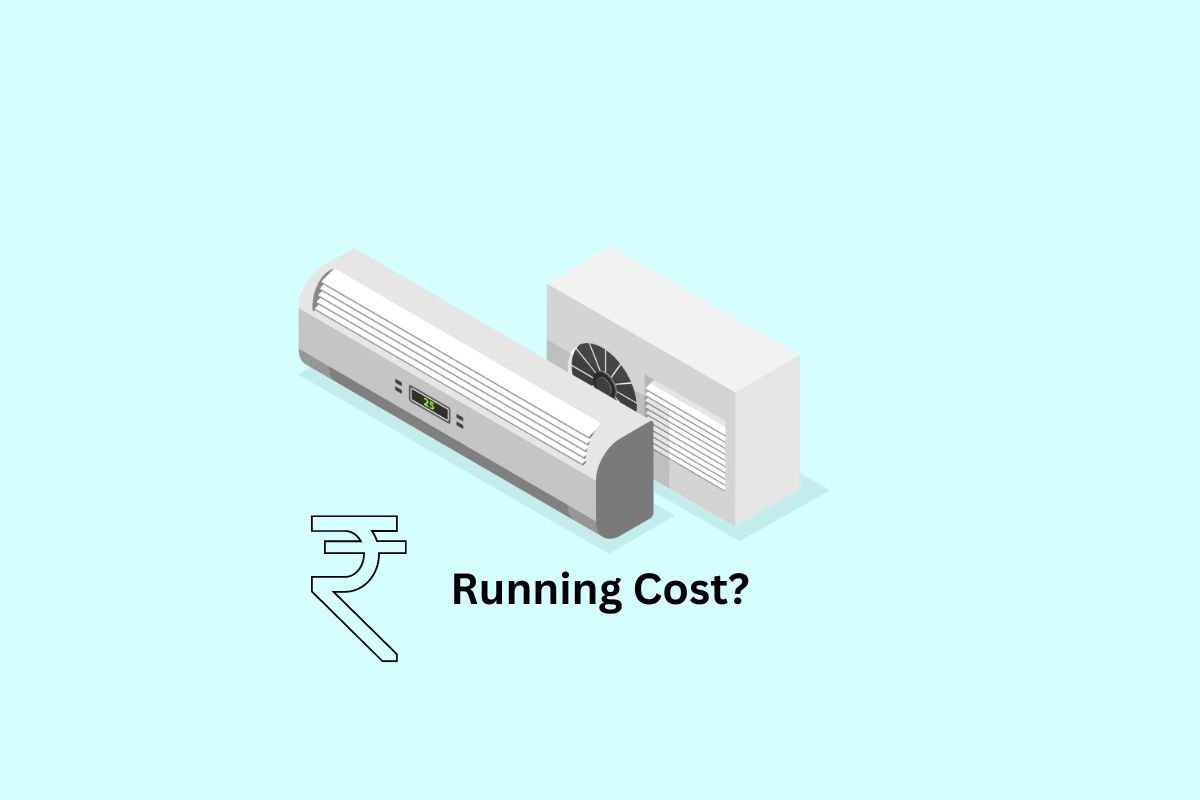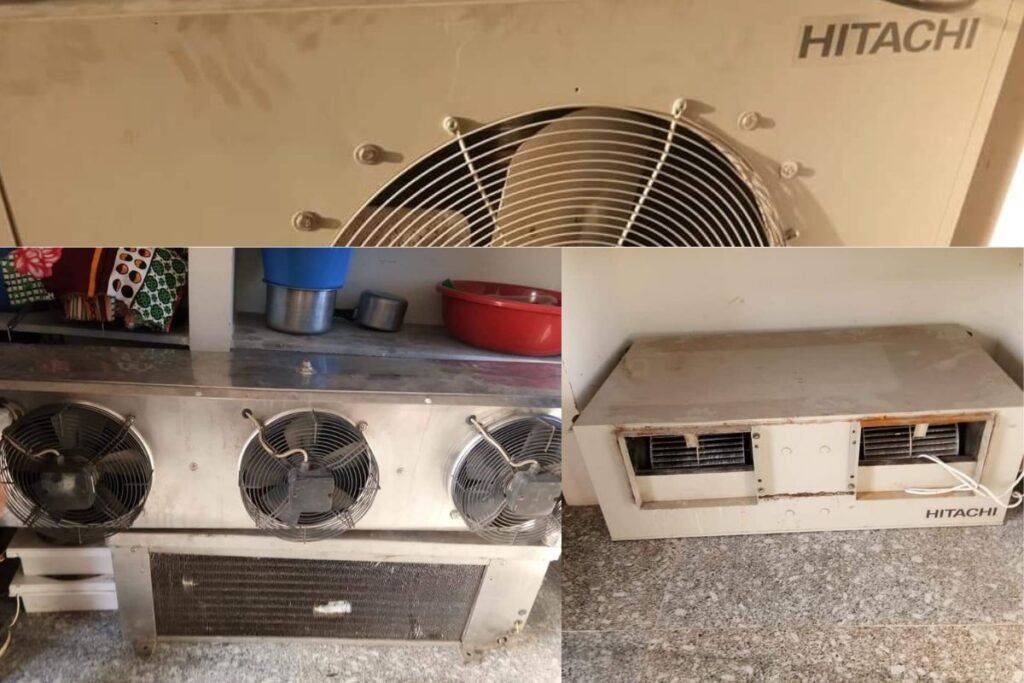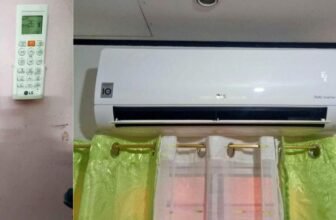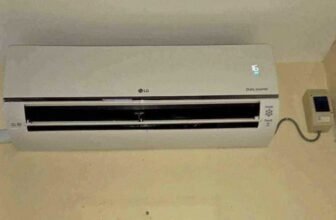
When considering air conditioning options for a home or business in India, the choice between ducted and split system units is a critical one that impacts both comfort and running costs. Ducted air conditioning systems are integrated into a building’s structure, providing centralised cooling with air distributed through ducts to various rooms. This system is often seen as a more aesthetic solution since the majority of the components are hidden from view, leading to a more uniform appearance in each space. On the other hand, split system air conditioners consist of an indoor unit connected to an outdoor unit, with each individual system catering to a single room or area.
The running costs of ducted and split system units can vary greatly, influenced by factors like the size of the area to be cooled, the system’s energy efficiency, and the climate in India, which can demand significant use of air conditioning. Ducted systems generally involve higher initial installation costs due to the complexity of adding ductwork, especially in an existing building. However, they can be more cost-effective in the long run for larger properties or those with an open-plan layout, offering efficient cooling across multiple rooms. In contrast, the running costs of split systems may be lower for smaller spaces or when only certain areas require cooling, as they allow for targeted temperature control and typically have lower initial installation costs.
Making an informed decision between ducted and split system air conditioning is not only a matter of preference but also a financial consideration, given the varied climate conditions and electricity tariffs in India. The operational efficiency and subsequent running costs are important to evaluate for achieving the desired comfort without incurring excessive energy bills. Each system has its own set of advantages and potential drawbacks, making it crucial to consider the specific needs of the property and the occupants’ lifestyle when selecting an air conditioning solution.
Understanding Air Conditioning Systems
In India, discerning the differences between ducted and split system air conditioning units is crucial for homeowners and businesses looking at efficient climate control solutions. These systems vary in terms of installation, cost, and maintenance, which affects their suitability for different environments.
Basics of Ducted and Split System Units
Ducted air conditioning systems involve a central unit connected by a series of ducts that distribute air throughout a property. They are often used in larger spaces due to their capacity to cool or heat multiple rooms simultaneously. Split system air conditioners, on the other hand, consist of two main components: an outdoor unit and one or more indoor units. These are ideal for targeted cooling or heating in specific areas or rooms.
- Ducted Unit: Suitable for whole-house climate control.
- Split System Unit: Best for individual room temperature management.
Key Features of Ducted Systems

Ducted air conditioning systems, often referred to as ducted air, have several key features. Their air con units are usually hidden in ceilings or under floors, making them less obtrusive. Ducted systems also often feature zoning capabilities, allowing different temperatures in various parts of the home or office. This type of air conditioning unit usually has a higher initial installation cost compared to split systems.
- Concealed installation for aesthetic appeal.
- Potential for higher energy efficiency in large spaces.
Key Features of Split Systems
Split systems, sometimes referred to as split air or split system air, are characterised by their easier and generally cheaper installation. The split system air conditioner is more visible compared to ducted units but offers flexibility in that each unit operates independently of the others. Split system units can be particularly cost-effective for cooling or heating single rooms.

- Less invasive installation with a visible indoor unit.
- Ideal for selective area climate control with independent operation.
Installation Considerations
When deciding between ducted and split air conditioning systems, homeowners must account for the nuances in installation complexity and cost. These factors can influence both the upfront and long-term expenses associated with the air conditioning setup.
Evaluating Installation Costs
The installation cost for air conditioning systems varies significantly between ducted and split type units. Ducted systems, often considered more expensive to install, require a network of ducts that run throughout the premises which adds to labour and material costs. In contrast, split systems entail a lower installation cost due to their straightforward setup of an outdoor unit connected to indoor units via small conduits.
- Ducted Air Conditioning Installation: Typically includes extensive ductwork, higher labour costs, and potentially structural modifications.
- Split System Installation: Relatively less ductwork and easier installation typically result in reduced labour and overall costs.
Installation Process for Ducted and Split Systems
Installing a ducted system requires careful planning as it involves integrating ductwork into the building’s structure. The process may include altering ceilings or walls to accommodate the ducts, which can further escalate the cost and extend the installation time.
- Assess structural space: A requisite for the extensive network of ducts.
- Ductwork fitting: Requires professional fitting of ducts in concealed spaces.
Conversely, to install a split system, technicians usually mount an indoor unit on the wall and connect it to an outdoor condenser, minimising the need for intrusive alterations to the property.
- Indoor unit mounting: Involves securing the indoor unit to a wall.
- Outdoor condenser placement: Needs strategic positioning, typically on the ground or mounted to the exterior wall.
The choice between installing a ducted system or a split system ultimately depends on the specific requirements of the property and the budget constraints of the homeowner. Both systems have their own set of advantages and challenges, which must be weighed during the planning stage of air conditioning installation.
Energy Efficiency and Running Costs
When considering air conditioning for homes in India, two popular options are ducted and split systems. Understanding their energy efficiency and running costs is critical for homeowners to make an informed decision.
Energy Costs of Ducted vs Split Systems
Ducted air conditioning systems are generally more energy-efficient when cooling larger spaces or multiple rooms simultaneously. Conversely, split systems are often cheaper to run in smaller spaces or when only a single room requires cooling. The initial installation costs for ducted systems may be higher, but they may offer better energy efficiency in larger properties, leading to lower power bills in the long run.
Estimating Overall Running Costs
To estimate overall running costs, homeowners should consider the size of the area to be cooled, the climate in their region, the energy efficiency rating of the system, and the local energy costs. For example, a high-efficiency split system air conditioner might cost approx ₹1 – ₹4 paise per hour to cool an average-sized room, whereas the cost to run a ducted system can be higher but more cost-effective for larger homes.
| Feature | Ducted Air Conditioning | Split System |
|---|---|---|
| Initial Cost | ₹2 lakh – ₹10 lakh+ | ₹25,000 – ₹1 lakh |
| Installation Cost | ₹30,000 – ₹50,000 | ₹5,000 – ₹15,000 |
| Running Cost per hour | ₹4 – ₹8 | ₹1 – ₹4 |
| Maintenance Cost | ₹5,000 – ₹10,000 per year | ₹1,000 – ₹5,000 per year |
| Suitable for | Large houses (₹4 lakh+), multi-level buildings (₹8 lakh+) | Small houses, individual rooms |
| Zone Control | Yes (additional cost per zone) | Limited (generally controls one room) |
| Heating Option | Yes (around ₹50,000 extra) | Limited (requires separate systems) |
Factors Affecting the Running Cost
Several factors influence the running cost of air conditioning systems:
- Unit efficiency: Higher energy ratings typically lead to lower running costs.
- Size of area: Larger areas require more energy to cool.
- Insulation: Proper insulation can reduce energy consumption.
- Usage patterns: Frequent use increases running costs.
- Maintenance: Regular maintenance can ensure systems operate efficiently.
Despite split systems being potentially cheaper to run for smaller areas, ducted systems may offer a cost-efficient solution for widespread cooling needs. It’s key to assess individual circumstances to determine if the higher upfront installation cost for a ducted system will be offset by its energy efficiency in the long term.
Cooling and Heating Performance
When considering the right air conditioning system for a home in India, it’s essential to evaluate cooling and heating performance, particularly as it varies across different climate zones. Both ducted and split systems offer the capabilities to cool and heat, but their efficiency may differ depending on the application and specific needs of the space.
Performance in Different Climate Zones
Ducted air conditioning systems are known for their consistent performance in various climate zones. With a zoned system, the user has the ability to control temperatures in different areas of the home, which can be particularly beneficial in regions with diverse climates. However, these systems can be less cost-effective if only a small section of the home requires temperature regulation. In contrast, split systems can be more economical as they can cool or heat individual rooms, avoiding the energy expenditure of conditioning unused spaces.
Effectiveness in Cooling and Heating
Regarding effectiveness, both split and ducted systems can be equipped with reverse cycle technology, allowing for efficient heating as well as cooling. A split system air conditioner often provides rapid cooling or cold air to a specified zone, making it suitable for quick temperature control. For those with a need to cool or heat larger areas, ducted systems may offer more uniform distribution of temperature-regulated air throughout the entire home. This makes ducted systems ideal for comprehensive climate control over a larger footprint, although they may require a higher initial investment.
System Design and Home Layout
When selecting a new air conditioning system for your home, whether it’s a zoned ducted system or multiple split system units, careful consideration of the home’s layout and design is paramount. The efficiency and effectiveness of both systems are heavily dependent on how well they are integrated with the size and zoning needs of the house.
Designing a Zoned Ducted System
A new system for your home that offers a comprehensive solution is the zoned ducted air conditioning system. This design involves creating different climate zones within the entire house, usually through a series of ducts that lead to various rooms or areas. The major advantage of a zoned ducted system is its ability to control temperatures in various parts of the home independently.
- Size of the Ducted System: It needs to be accurately calculated to ensure that the unit can handle the air supply for the entire home efficiently.
- Zone Control: Installing variable air volume (VAV) controllers or dampers allows for precise control over the temperature of each zone, enhancing comfort and reducing energy consumption.
Considerations for Split Systems in Home Layout
Integrating multiple split system units into your home presents different challenges:
- Individual Room Control: These systems are ideal for targeting temperature control to specific areas or different rooms, potentially saving energy if only certain parts of the house require conditioning.
- Strategic Placement: To maximise efficiency, the indoor units should be placed in locations where airflow can be distributed evenly throughout the desired area.
A deeper understanding of system design in relation to the home’s layout is vital to achieving optimal performance from either new air conditioning system, whether it’s a zoned ducted system or multiple split systems.
Pros and Cons of Each System
When considering air conditioning solutions in India, it’s vital to understand the advantages and limitations of ducted and split systems. Each offers distinct benefits and considerations that may influence your decision based on cost, efficiency, and installation requirements.
Advantages of Ducted Systems
Ducted air conditioning systems provide a seamless and consistent cooling experience. Modern ducted air conditioners are often praised for their ability to cool multiple rooms or large areas uniformly. They are typically more discreet and less visually intrusive than split systems, as the ductwork and vents can be hidden above ceilings or within walls. The noise level with ducted systems is usually lower, translating to a quieter indoor environment. Additionally, with the zoning capabilities of modern ducted systems, users can control temperatures in various areas, potentially leading to more efficient energy usage and reduced running costs.
- Uniform cooling across multiple rooms
- Aesthetically pleasing with concealed components
- Lower noise pollution
- Zoning capabilities for energy efficiency
Advantages of Split Systems
Conversely, split systems offer flexibility and affordability. The split system’s easy installation process makes it a practical choice for individual rooms or smaller homes. This type of aircon system avoids extensive ductwork, which can be beneficial in certain architectural settings where installing ducts is not feasible. Running costs for split systems can be lower, especially when cooling needs are limited to specific areas. The capacity to install multiple split system air conditioners allows for a tailored approach to climate control within the home.
- Cost-effective for small areas or specific rooms
- Easy installation with minimal structural alteration
- Lower initial costs and potentially reduced running costs for small areas
Limitations and Considerations
While ducted systems cost more upfront and can incur higher installation fees, they might offer better value in the long term for larger spaces or entire homes. Split systems and ducted air, when compared, show that split units may be less effective in larger environments and could require the installation of multiple units to achieve the same level of comfort as a ducted system, which could, in turn, increase the overall expense.
Furthermore, split air conditioning systems can be less aesthetically pleasing as the indoor and outdoor units are visible. If you’re contemplating whether a ducted system is best for your needs or if a split system might suffice, consulting with professional air conditioning technicians is advisable to assess the suitability for your specific setting and financial circumstances.
- Higher initial investment for ducted systems
- Visual impact of split unit installations
- Potential need for multiple split systems throughout larger properties





